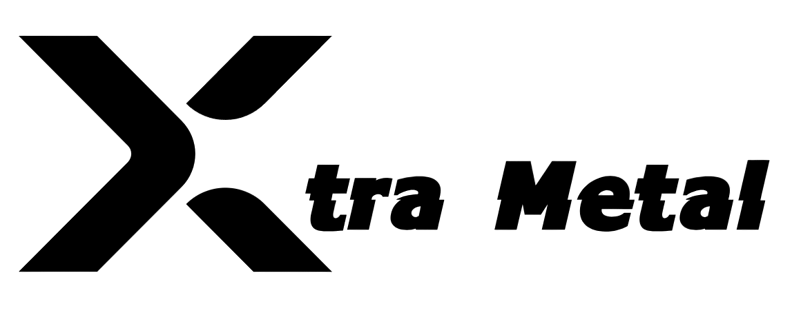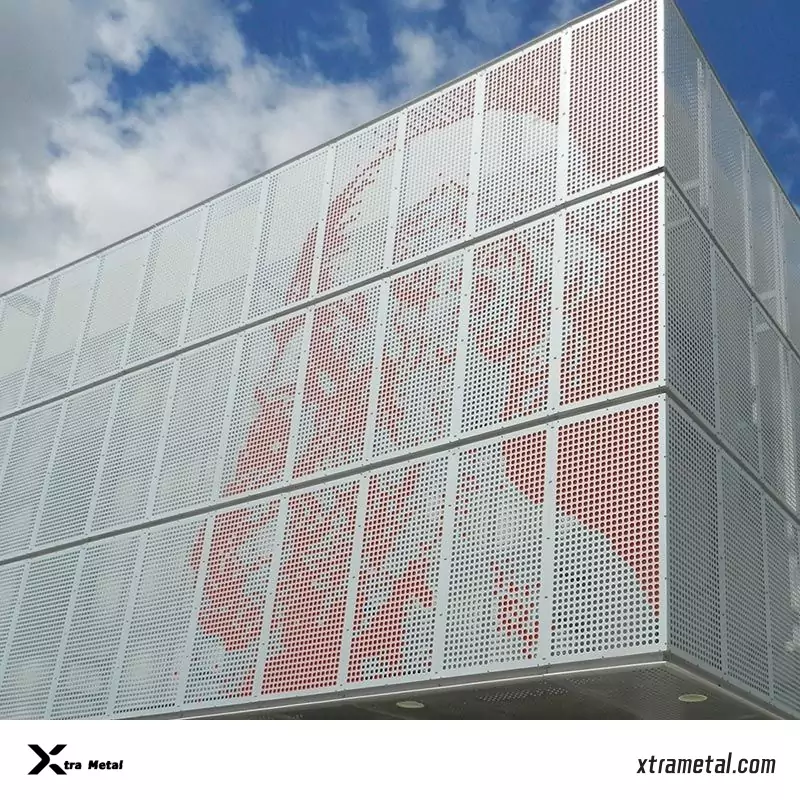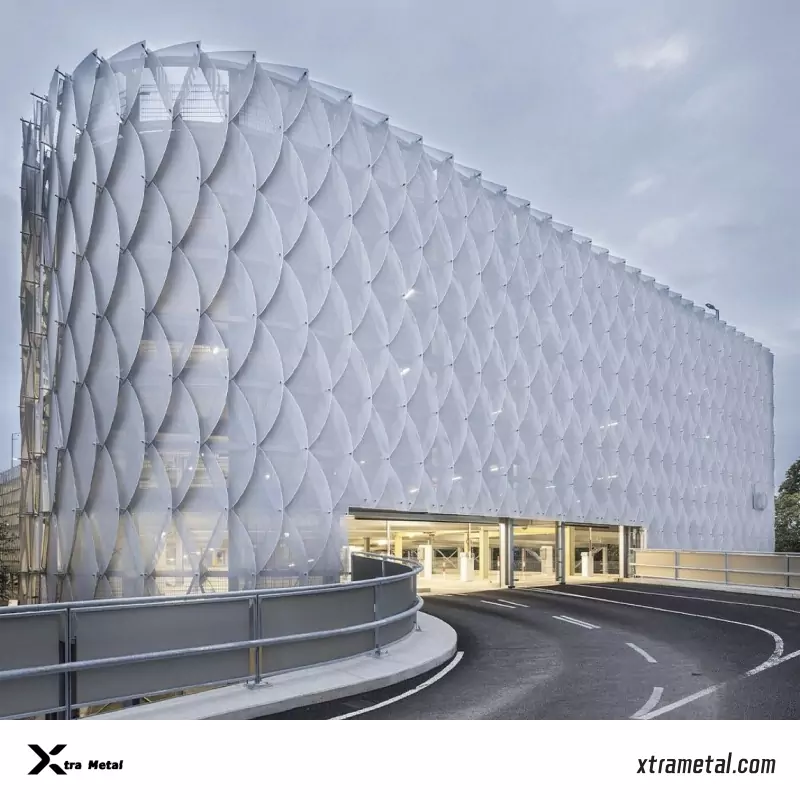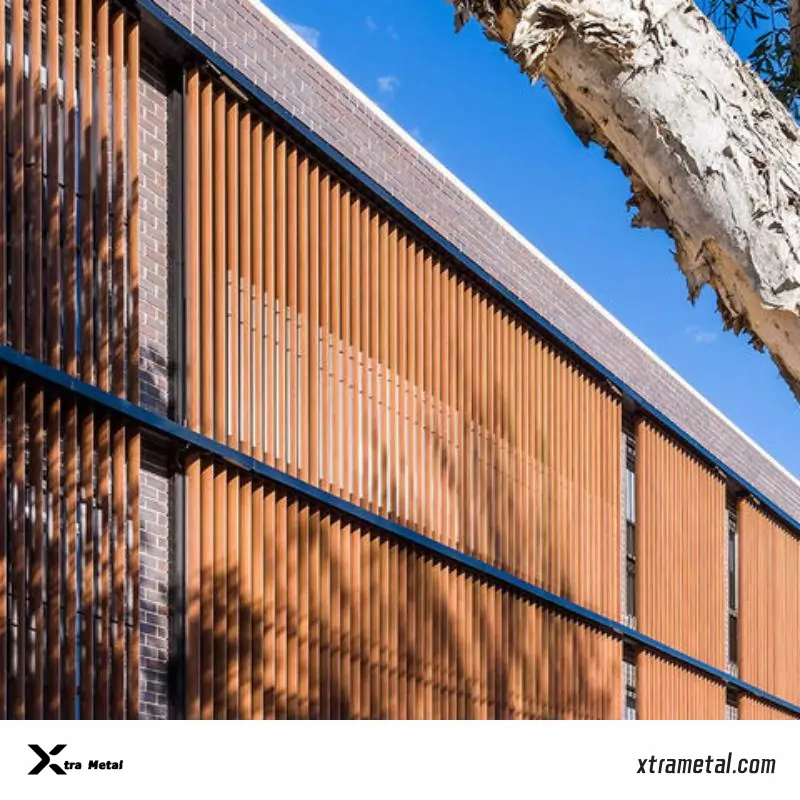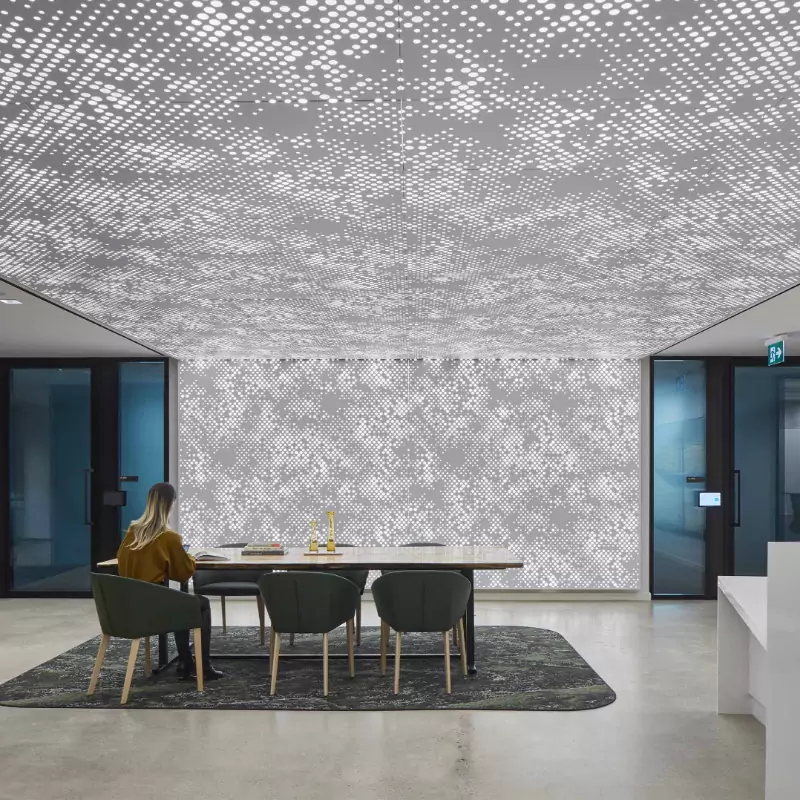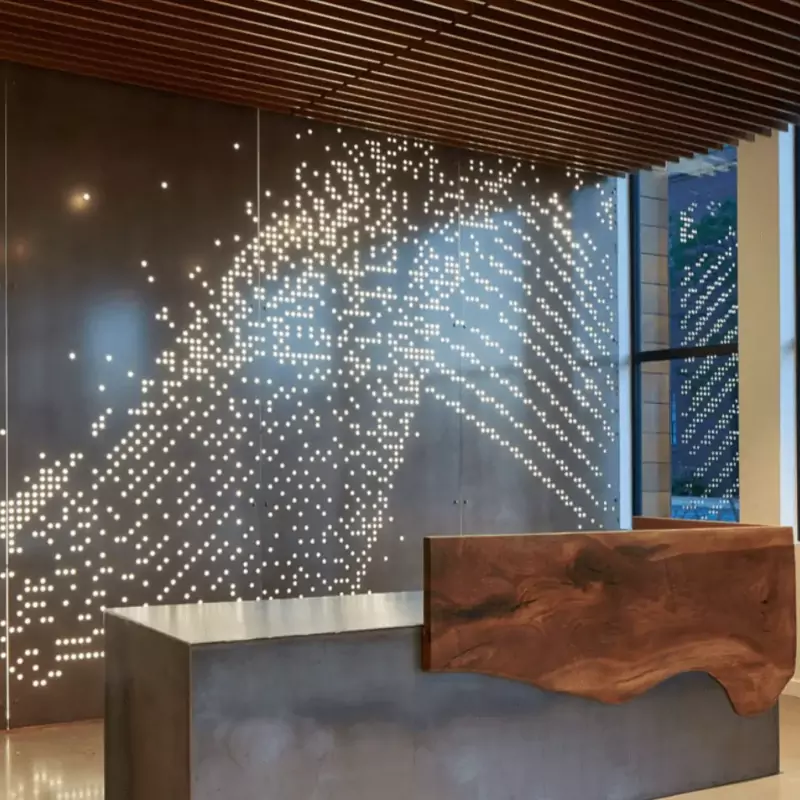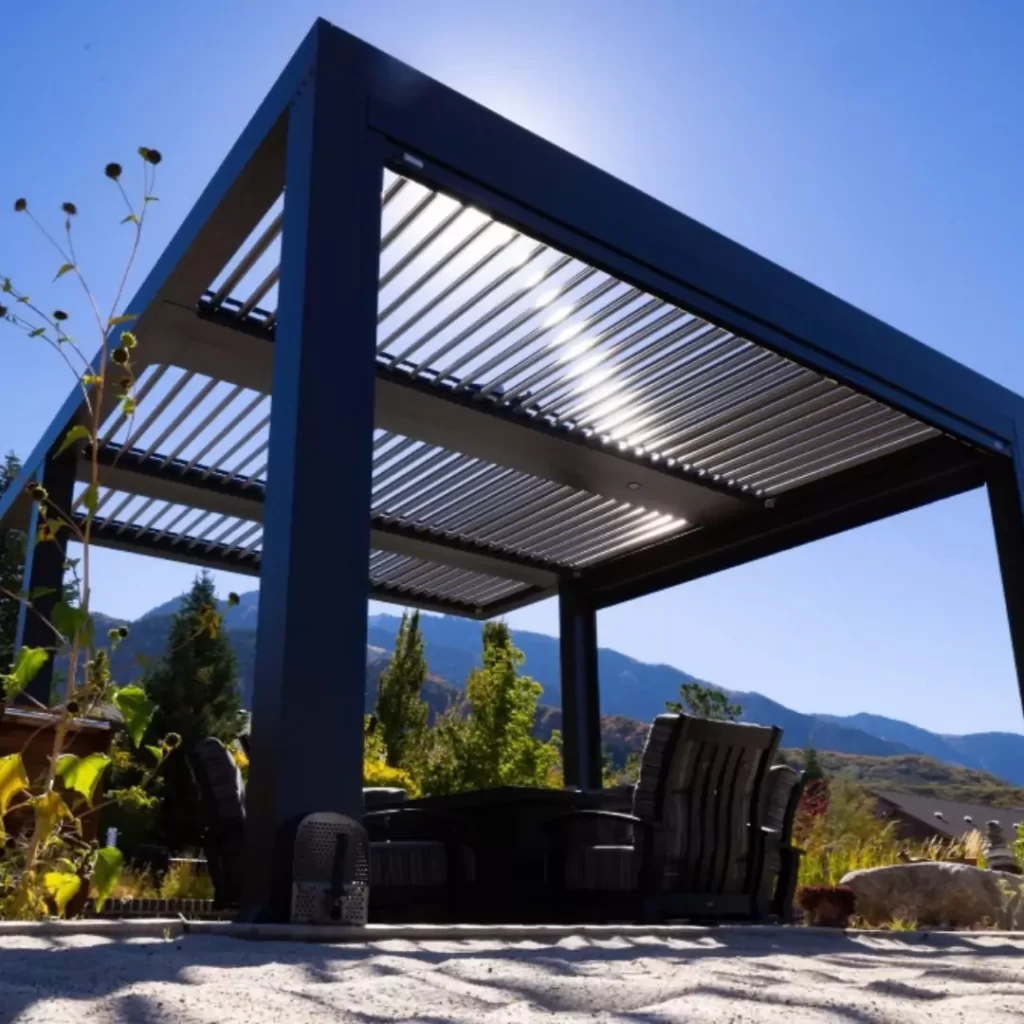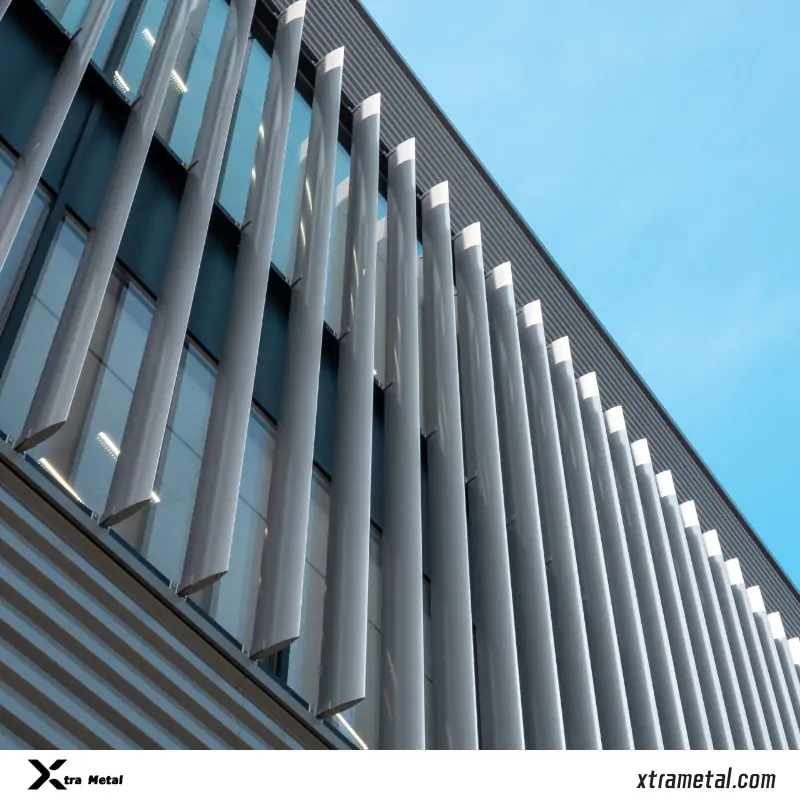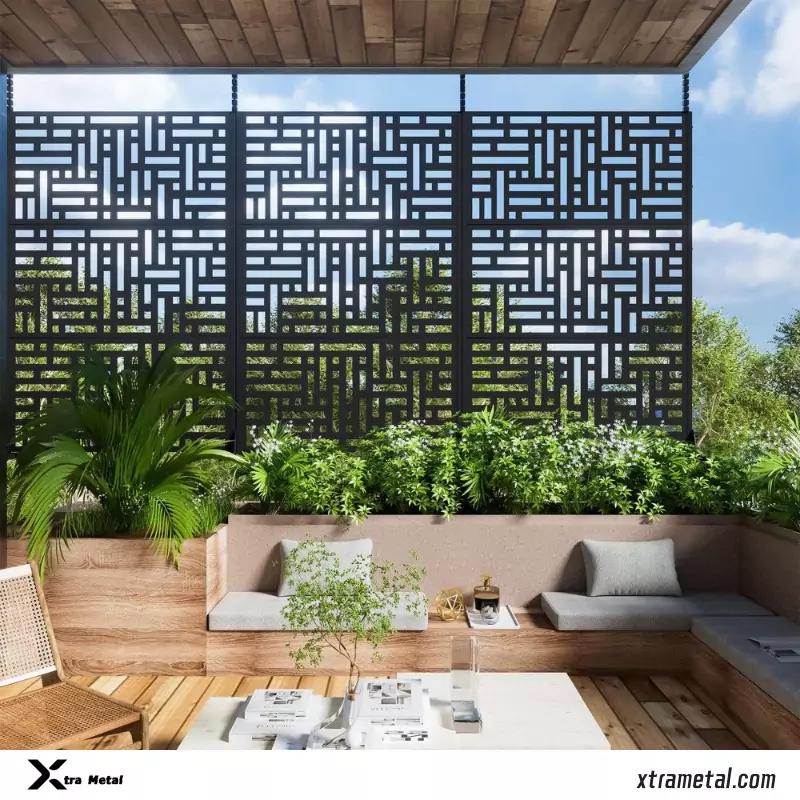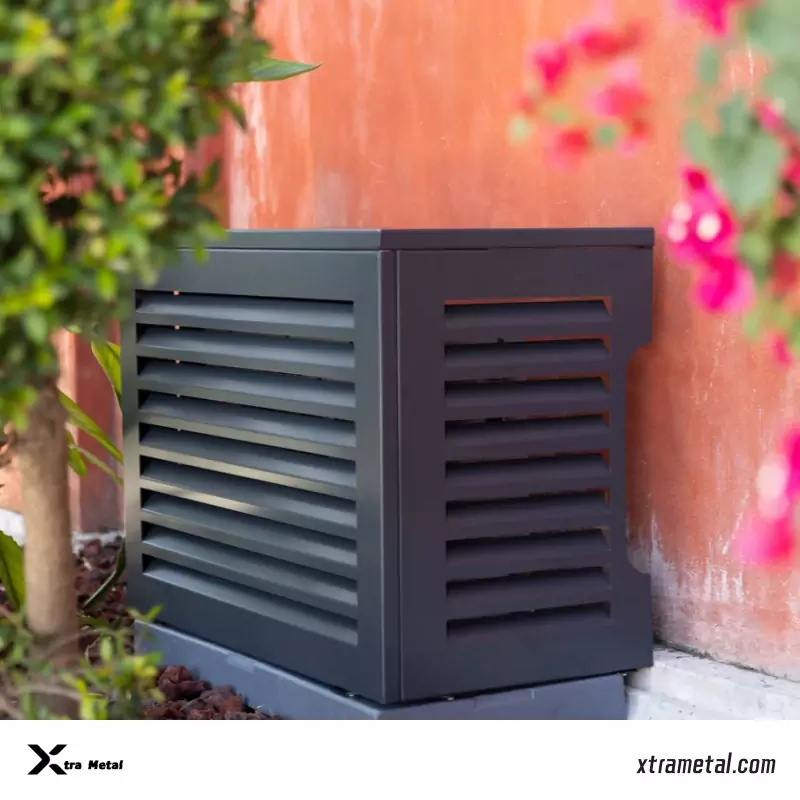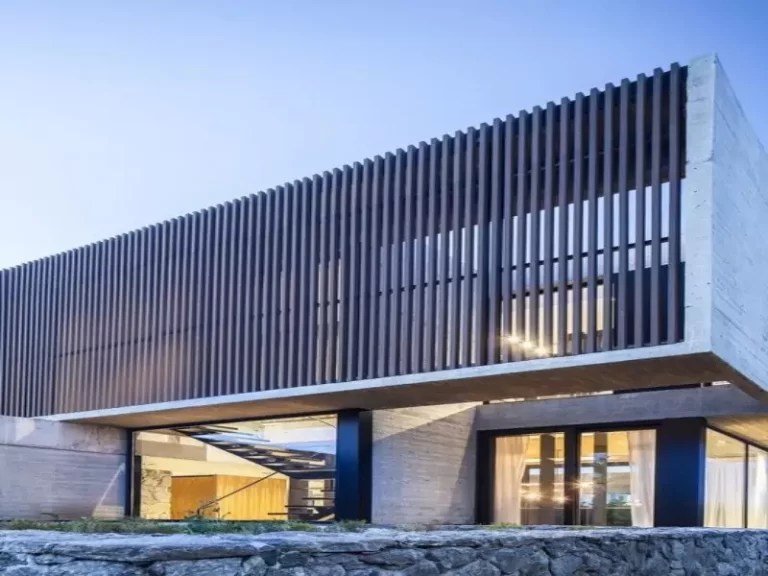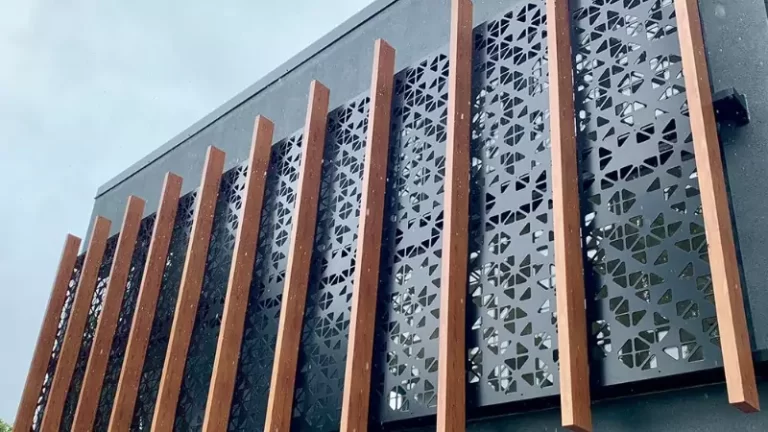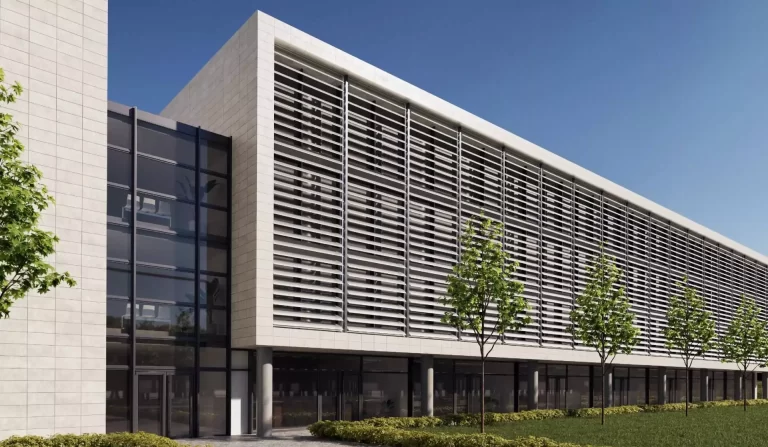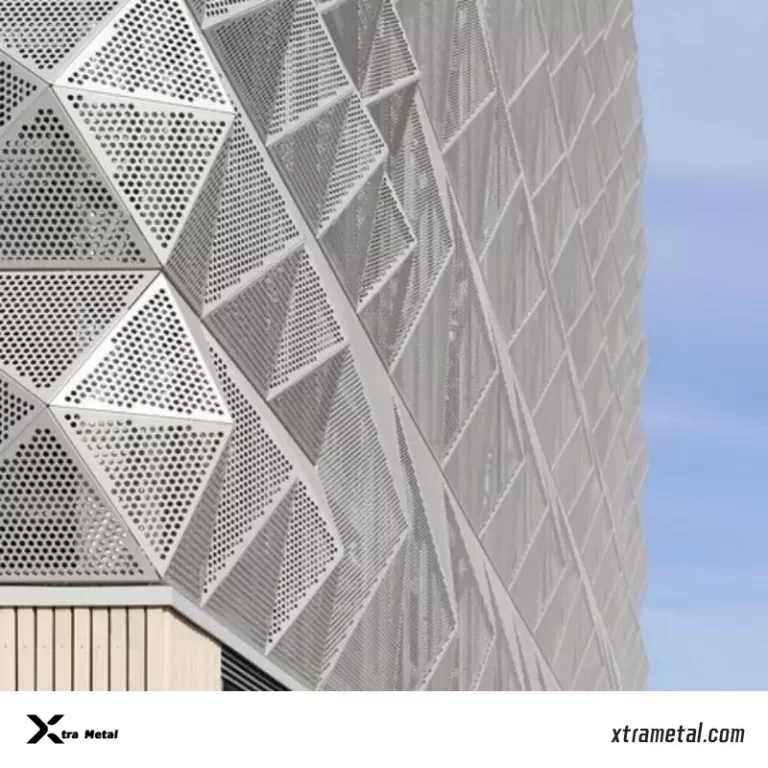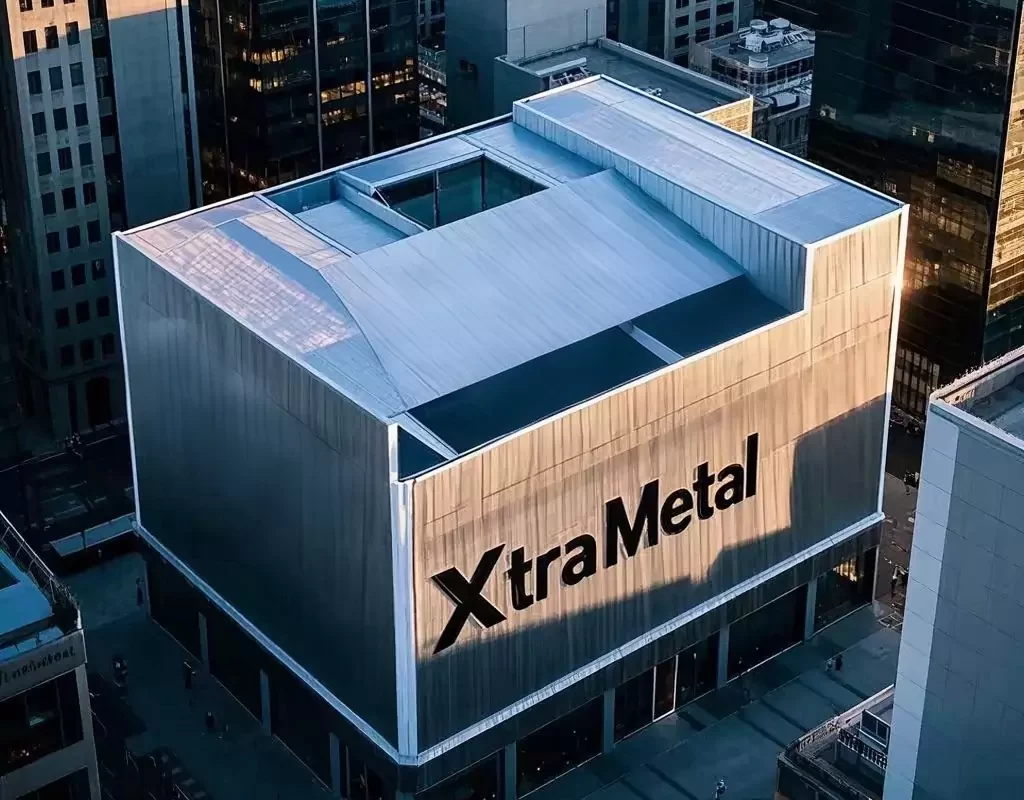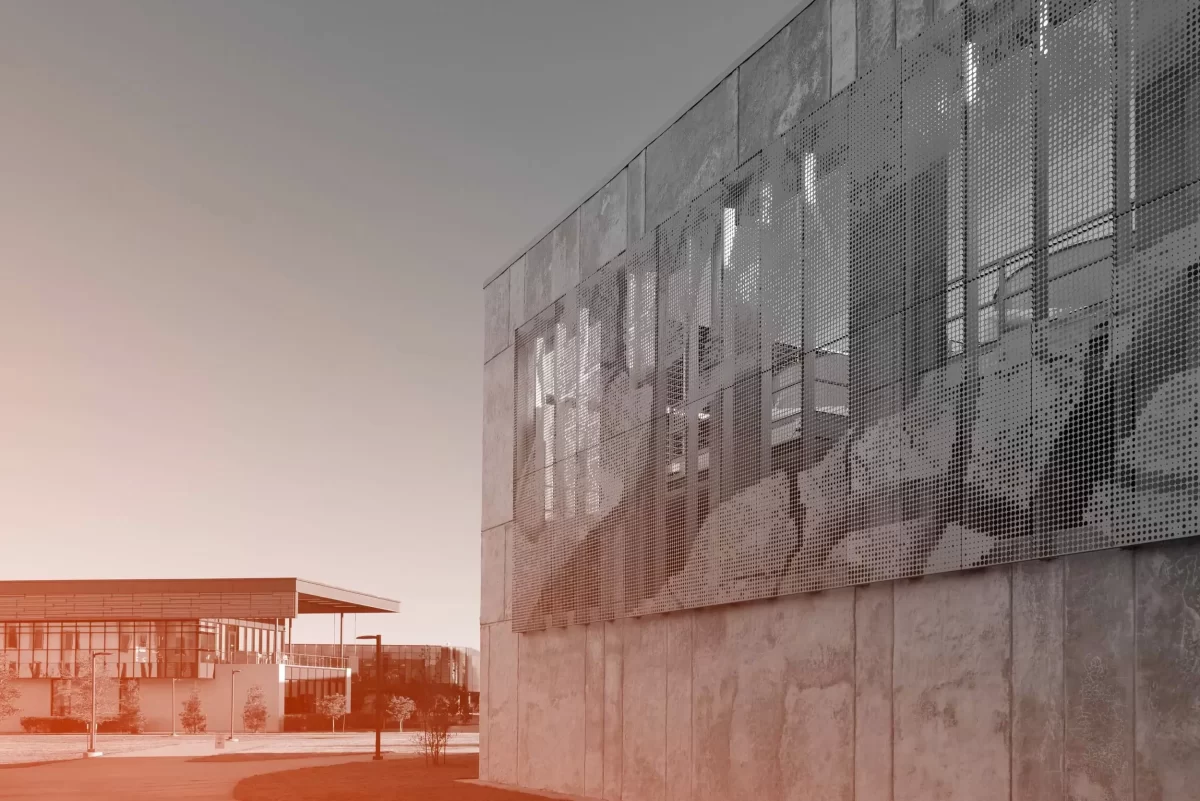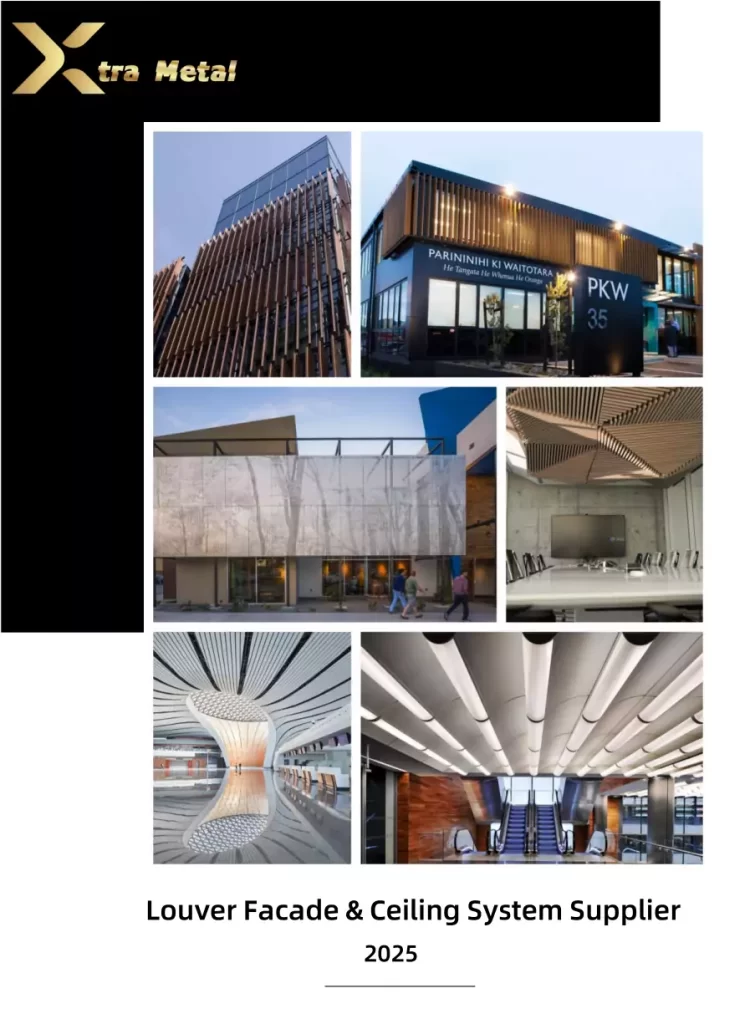In architecture, louvered walls help with ventilation, privacy, and energy savings. They’re used in homes, offices, and factories, offering both practical benefits and a sleek design. Key advantages include better airflow, light control, and long-lasting materials that need little upkeep. This guide will walk you through everything you need to know about louvered walls, from types and materials to design tips and real-world uses.
Types of Louvered Walls
Louver facade comes in different designs, each suited for specific needs. Let’s explore the main types based on their orientation and adjustability.
Orientation: Horizontal vs. Vertical
The direction of the slats affects how louvered walls work and look.
- Horizontal Louvers: Slats run side to side, parallel to the ground. They’re great for blocking high-angle sunlight, like on south-facing walls in the northern hemisphere. They also deflect rainwater well, making them ideal for areas needing strong weather protection, such as parking garages or patios.
Advantages: Simplicity in design often translates to lower initial cost and higher durability due to fewer moving parts. They offer a consistent aesthetic and are common for applications where constant ventilation or a fixed level of shading/privacy is required, such as standard ventilation intakes/exhausts or purely decorative elements.
Disadvantages: Lack of flexibility is the primary drawback. The level of airflow, light penetration, or privacy cannot be altered once installed.
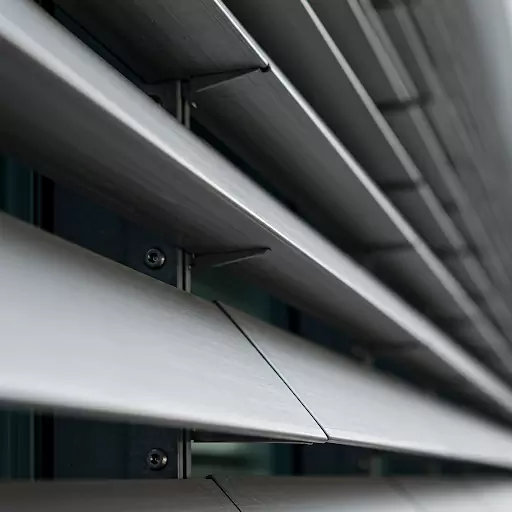
- Vertical Louvers: Slats run up and down. They control low-angle sunlight, perfect for east or west-facing walls. Vertical louvers also offer privacy and can act as windbreaks, which are suitable for creating private outdoor spaces or shielding equipment.
Advantages: The key benefit is control. Users can modify the blade angle to maximize ventilation, block sunlight, ensure privacy, or seal against inclement weather as needed. This adaptability makes them suitable for dynamic environments or multi-functional spaces.
Disadvantages: Increased mechanical complexity typically leads to higher initial costs and potentially greater maintenance requirements over time compared to fixed systems
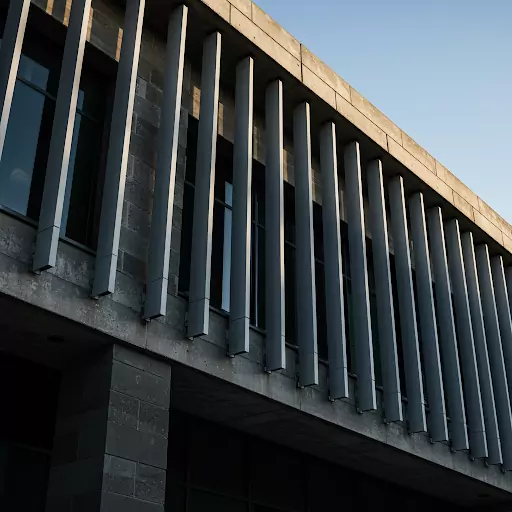
Adjustability: Fixed vs. Adjustable
Louvered walls can have slats that stay in place or move.
- Fixed Louvers: Slats are set at a permanent angle. They’re simple, cost-effective, and need little maintenance. Use them where consistent airflow or light control is enough, like in industrial ventilation systems.
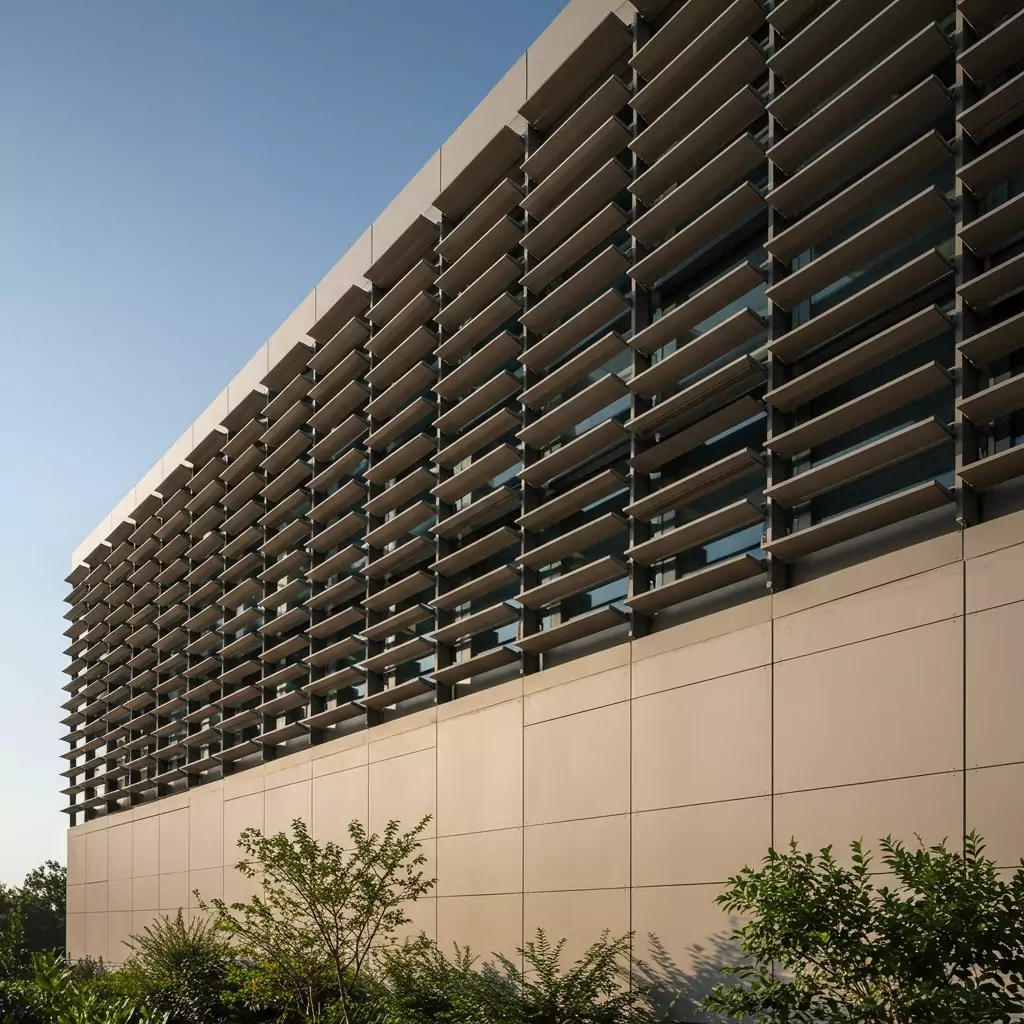
- Adjustable Louvers: Slats can tilt to different angles, manually or with automation. They give you more control over light and air, ideal for spaces like office buildings or homes where conditions change throughout the day.
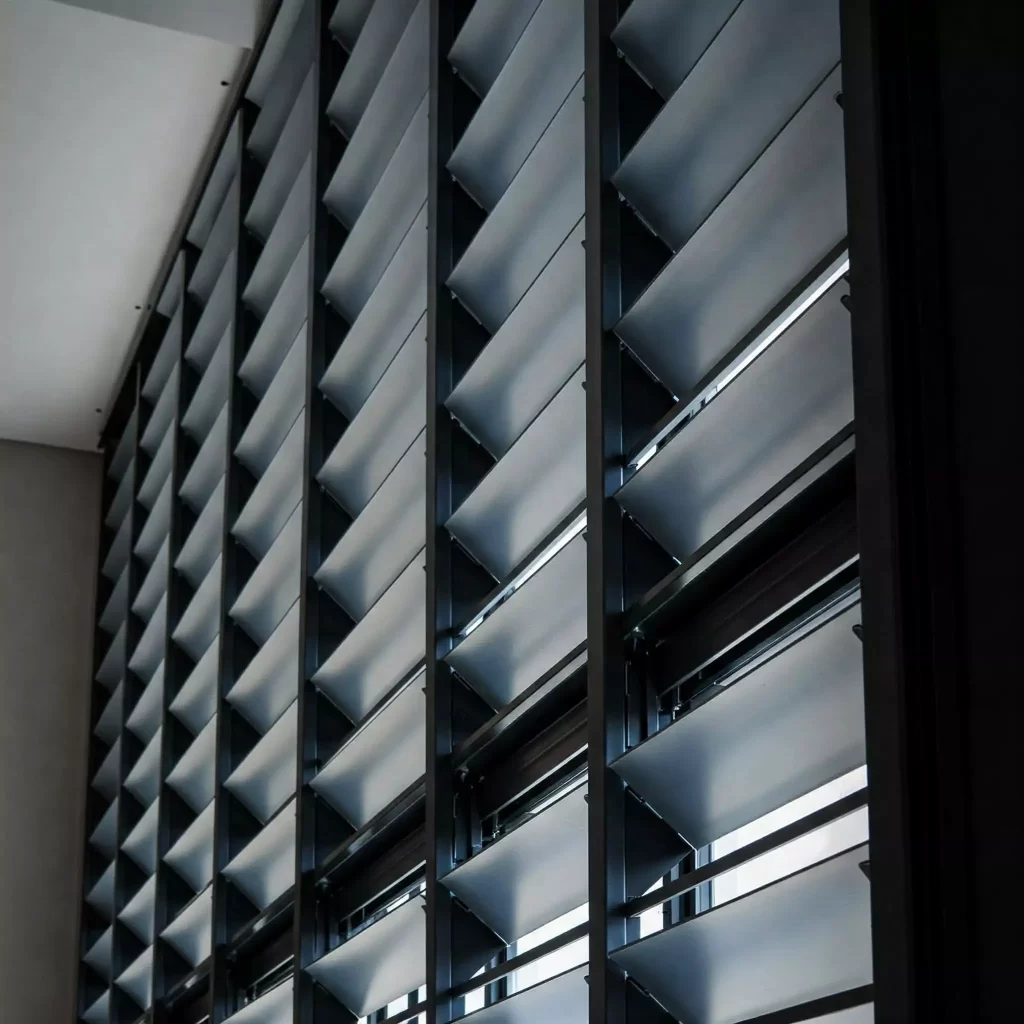
Benefits of Louvered Walls
Louvered walls offer many advantages that make them a smart choice for your projects. Here’s why they stand out.
Ventilation
Louvered walls let fresh air flow through, reducing the need for fans or air conditioning. This saves energy and keeps indoor spaces comfortable. For example, in a factory, they can prevent heat buildup, improving worker safety and equipment performance.
Light Control
You can adjust the slats to control sunlight, cutting glare and heat. This is great for offices where bright light can distract workers or overheat rooms. Horizontal louvers work best for high-angle sun, while vertical ones handle low-angle light.
Privacy
Need to shield a space from prying eyes? Louvered walls block direct views while letting air and light in. They’re perfect for urban projects where buildings are close together, creating private areas without feeling closed off.
Durability and Low Maintenance
Materials like aluminum and PVC resist weather and wear, lasting years with little care. This saves time and money, especially for large projects where upkeep can be a hassle.
Materials Used in Louvered Walls
Choosing the right material is key to getting the performance and look you want. Here’s a comparison of common materials.
Metal Louvers (Aluminum, Steel):
- Characteristics: Metal louvers, particularly those made from extruded aluminum, are highly valued for their durability, strength-to-weight ratio (especially aluminum), and resistance to weathering. Finishes play a crucial role in longevity and aesthetics; options include powder coating in various colors, durable Kynar coatings (often carrying long warranties), and anodizing for aluminum, which creates a hard, protective oxide layer enhancing corrosion resistance. Galvanized steel offers robustness but may be heavier than aluminum.
- Applications: Widely used in architectural facades, commercial building ventilation, modern privacy screens, pergola walls , contemporary fencing, and industrial settings requiring robust performance.
Wood Louvers:
- Characteristics: Wood offers a classic, natural aesthetic and can be painted or stained to match various design schemes. However, it requires regular maintenance, including cleaning, sealing, and potentially refinishing, to prevent warping, rot, and insect damage, although naturally resistant species like Western Red Cedar can offer better performance. Teak is another durable wood option sometimes used.
- Applications: Commonly found in traditional window shutters, decorative accents, garden privacy screens, and pergola structures, where a natural look is desired
Vinyl & PVC Louvers:
- Characteristics: Polyvinyl chloride (PVC) and other vinyl formulations offer excellent resistance to moisture, insects, and decay, making them very low-maintenance options. They are lightweight, relatively inexpensive, and available in various colors, though color choices might be more limited than painted metal or wood. Structural rigidity can be a concern for very large spans compared to metal.
- Applications: Popular for gable vents, residential privacy fencing , window shutters , and enclosures for utilities like air conditioning units.
WPC (Wood Polymer Composite) Louvers:
- Characteristics: WPC blends wood fibers or flour with polymers (like polyethylene, polypropylene, or PVC) to create a material that mimics the appearance of wood but offers enhanced durability and lower maintenance. These products are typically resistant to water, termites, and decay, often come pre-finished, and are ready to install.
- Applications: Increasingly used for exterior wall cladding, fencing, decking, and pergola components, offering a wood-like look without the associated upkeep.
Glass Louvers:
- Characteristics: Glass louvers provide a sleek, modern aesthetic. They allow natural light transmission while potentially offering ventilation and privacy control through frosting, texturing, or adjustable mechanisms. They are often incorporated into high-end architectural designs or specific window systems.
- Applications: Used as architectural features in facades, operable window systems (jalousie windows), and sometimes in interior partitions where light sharing is desired.
Polyurethane Louvers:
- Characteristics: High-density polyurethane foam can be molded into various shapes, offering a lightweight yet durable alternative, particularly for decorative elements. It is resistant to weather, insects, and rot, and typically comes primed and ready for painting.
- Applications: Frequently used for non-functional decorative elements like gable vents and window shutters, replicating the look of wood without the maintenance.
Table: Louver Material Comparison
| Material | Key Characteristics | Pros | Cons | Typical Applications | Relative Cost Bracket |
|---|---|---|---|---|---|
| Aluminum | Lightweight, strong, excellent corrosion resistance (esp. finished), versatile finishes | Durable, low maintenance, recyclable, modern aesthetic, good for large spans | Higher initial cost than vinyl/some woods, can dent | Facades, commercial louvers, ventilation, fences, pergola walls, shutters 3 | −$ |
| Steel (Galvanized) | Strong, durable, good corrosion resistance (galvanized) | Very strong, relatively cost-effective for strength | Heavier than aluminum, potential for rust if coating is damaged, limited finish options vs. aluminum | Commercial/industrial ventilation, structural louvers, some fencing 3 | −$ |
| Wood | Natural aesthetic, can be painted/stained, good insulator | Beautiful appearance, traditional feel, customizable finish | Requires regular maintenance (painting/staining), susceptible to rot/insects/warping | Shutters, decorative accents, privacy screens, pergola walls 6 | −$$ |
| Vinyl / PVC | Lightweight, moisture/insect resistant, low maintenance, various colors | Affordable, easy to clean, weather resistant, good for wet areas | Can become brittle in extreme cold, potential for fading/discoloration over time, less rigid than metal | Gable vents, fences, shutters, utility screens 2 | −$ |
| WPC | Wood-like appearance, low maintenance, water/termite proof, often pre-finished | Durable, resists rot/decay, stable dimensions, eco-friendly options (recycled content) | Can be heavier than wood/vinyl, appearance may not perfectly replicate natural wood, cost varies | Cladding/wall panels, fences, pergolas, decking 5 | −$ |
| Glass | Transparent/translucent, modern look, allows light | Sleek aesthetics, daylighting benefits, unique design possibilities | Fragile, expensive, requires specialized installation/framing, cleaning challenges | Architectural features, high-end windows, interior partitions 4 | $$$$ |
| Polyurethane | Lightweight, durable, weather resistant, paintable, mimics wood detail | Excellent for decorative shapes, impervious to insects/rot, low maintenance | Primarily decorative (not structural), cost can be higher than vinyl for similar function | Decorative gable vents, non-functional shutters 2 | −$ |
(Cost brackets: $ = Lower, =Mid-range,$ = Higher, $$$$ = Premium)
Material Durability & Climate Suitability
The longevity of a louvered system depends heavily on choosing a material appropriate for the local climate and environmental conditions.
- Corrosion Resistance: In coastal areas with salt spray or regions with high humidity or industrial pollution, materials with excellent corrosion resistance are essential. Anodized aluminum, stainless steel, vinyl, and PVC generally perform well.Wood requires careful species selection (e.g., cedar, teak) and meticulous maintenance with appropriate finishes. Standard steel requires robust protective coatings like galvanization and paint.
- UV Stability: In areas with intense sunlight, materials should resist fading, chalking, or becoming brittle due to UV exposure. High-quality finishes on metal (e.g., Kynar/PVDF powder coats ) and UV-stabilized vinyl/PVC offer better performance. Wood finishes will require periodic reapplication.
- Temperature Extremes: Materials experience thermal expansion and contraction. Systems installed in climates with significant temperature swings must accommodate this movement to prevent buckling or stress. Materials with lower thermal expansion coefficients or systems designed with appropriate expansion joints are preferable. Extreme cold can make some plastics brittle.
- Additional new content: Specific Recommendations: For coastal environments, prioritize anodized aluminum, stainless steel, or high-grade vinyl/PVC. In high-UV zones, select materials with proven UV-resistant finishes or inherent stability. For areas with freeze-thaw cycles, ensure materials resist moisture absorption and cracking, and that drainage features function correctly to prevent ice buildup.
Design Considerations
Designing louvered walls requires balancing function and style. Here’s what to keep in mind.
Architectural Integration
Louvered walls should fit the building’s look. For modern projects, aluminum louvers create a sleek vibe. For traditional ones, wood adds warmth. Think about how they’ll work with windows, doors, and other materials.
Color and Finish Options
Colors can make or break a design. Metal louvers can be powder-coated in many shades. Wood can be stained or painted. PVC and composites come pre-colored, saving time. Choose finishes that match or contrast with your building’s palette.
Customization Choices
You can tailor louvered walls to your needs. Adjust slat size, spacing, or angle for specific airflow or light control. Xtra Metal Group offers over 100 panel patterns for unique designs.
Matching Building Styles
What’s your project’s style? Modern buildings need clean, metallic louvers. Traditional ones suit wood. Industrial projects benefit from steel’s strength. Matching the style ensures a cohesive look.
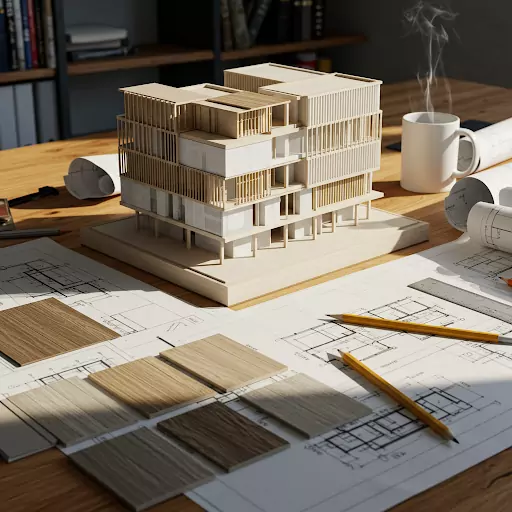
Maintenance and Care
Keeping louvered walls in top shape is easy with the right care. Here’s how to do it.
Cleaning Tips
- Metal: Wash with soap and water. In coastal areas, clean often to remove salt.
- Wood: Check for rot or bugs. Use a gentle cleaner and reseal every few years.
- PVC/Composites: Wipe with soap and water for a quick clean.
Repair and Replacement
Damaged slats can often be replaced without redoing the whole panel. For adjustable louvers, lubricate moving parts to keep them smooth. Contact your supplier for parts.
Preventive Maintenance
- Inspect regularly for wear, especially after storms.
- Tighten loose screws or brackets.
- For wood, apply sealant to block moisture.
Case Studies and Examples
Real-world examples show how louvered walls solve problems and enhance designs.
Residential Application
Picture a coastal villa where homeowners wanted privacy without losing the ocean breeze. They chose Xtra Metal Group’s adjustable aluminum louvers. The slats let them control light and air, creating a perfect outdoor retreat that matched their modern home.
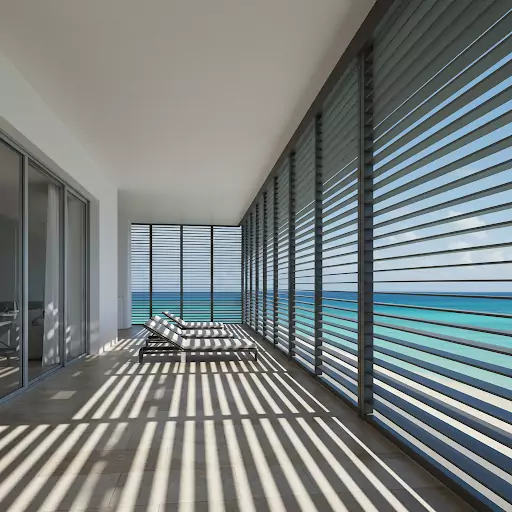
Commercial Application
An office in a sunny city needed to cut cooling costs. Architects used fixed horizontal aluminum louvers on the south side. These shaded windows lowered energy use and gave the building a sharp, professional look.
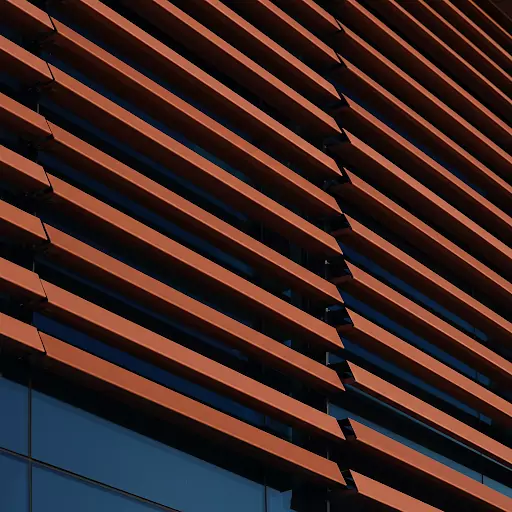
Industrial Application
A factory needed ventilation to keep machines cool. They installed Xtra Metal Group’s steel louvers, which stood up to tough conditions and ensured steady airflow, boosting efficiency and safety.
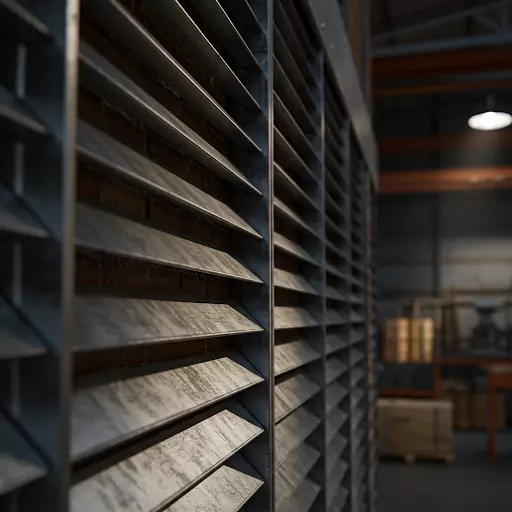
Making the Right Choice for Your Project
Louvered walls and exterior louvered wall panels are a smart choice for balancing function and style. They offer ventilation, privacy, and energy savings while looking great. With options like aluminum, wood, or PVC, you can find the perfect fit for any project.
Xtra Metal Group, with 30 years of expertise, provides custom metal louvers that meet your exact needs. Our one-stop solutions and high-end craftsmanship ensure top-quality results. Explore our products at Xtra Metal Group or contact us for a quote today. Let’s build something that lasts and impresses.
